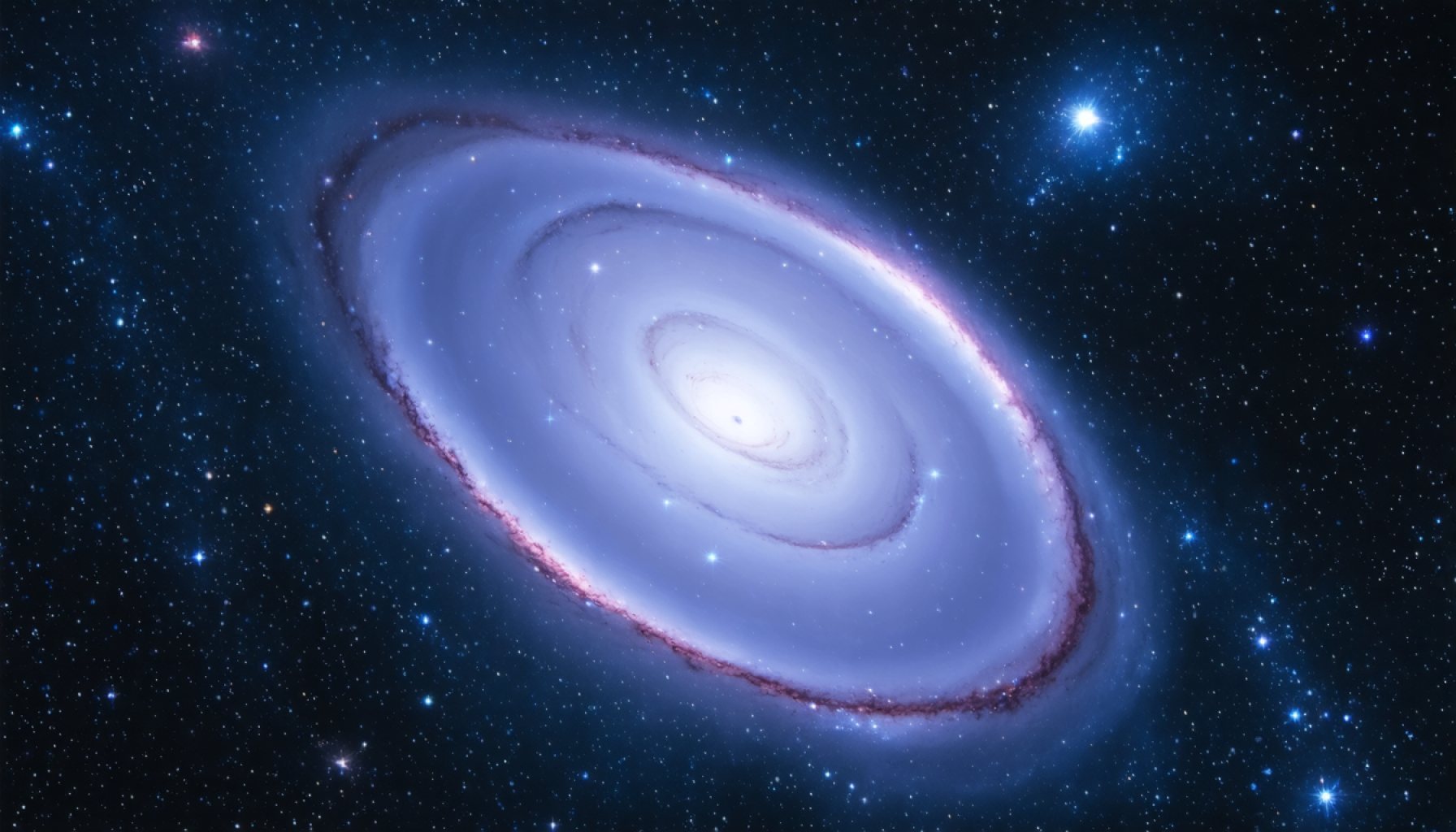- Astronomers discovered a supermassive black hole within the Large Magellanic Cloud (LMC), revealing new insights into our galactic neighborhood.
- The European Space Agency’s Gaia satellite tracked hypervelocity stars to uncover the black hole’s existence.
- Hypervelocity stars, moving at extreme speeds, result from binary systems torn apart by the black hole’s gravitational forces.
- The black hole is approximately 600,000 times more massive than the Sun, located within the LMC—a companion galaxy to the Milky Way.
- This discovery indicates the universe’s capacity to hide massive celestial bodies and reshapes our understanding of cosmic dynamics.
- The finding highlights the intricate cosmic ballet and unseen forces shaping the universe, featuring “hidden giants” awaiting discovery.
The cosmos never ceases to astonish. Recently, astronomers have unveiled a colossal secret nestled in the celestial neighborhood of the Large Magellanic Cloud (LMC)—a furtive supermassive black hole. This discovery, made possible through the meticulous tracking of hypervelocity stars, redefines what we thought we knew about our galactic surroundings.
Imagine stars being hurled through space at breakneck speeds, defying the gravitational embrace of the Milky Way. These are hypervelocity stars, and their mysterious trajectories have led scientists to a groundbreaking revelation. Through the sharp eyes of the European Space Agency’s Gaia satellite, researchers have traced the flight paths of 21 such stars, revealing the hidden dwellings of a supermassive black hole within the LMC, a companion galaxy to our own.
At the heart of this find is the remarkable synergy between data and theoretical models. The astronomers surmise that these runaway stars originate from where double-star systems have had the misfortune—and fortune—of venturing too close to an expansive black hole. The immense gravitational forces tear these binary systems apart: one star is ensnared into a harrowing dance with the black hole, while its partner is cast into space at velocities exceeding millions of miles per hour.
What solidifies this black hole’s existence is the distinct cluster of hypervelocity stars that aligns with the motion of the LMC as it spins past the Milky Way. This cosmic arrangement can only be credibly explained by the presence of a massive black hole lurking in the LMC’s shadow—a black hole approximately 600,000 times more massive than our Sun.
The discovery is astounding not just for its scale but for its proximity. To have overlooked such a giant in a neighboring galaxy speaks volumes about the universe’s ability to conceal its secrets. The Milky Way’s own supermassive black hole, by contrast, is a hefty 4 million solar masses, yet dwarfed by other behemoths scattered across distant galaxies.
As cosmic curtain-raisers go, this revelation of a neighborly giant reshapes our understanding of the interactions and the hidden forces sculpting the universe. It serves as a vivid reminder of the vast, intricate ballet playing out in the cosmos, where hidden giants lurk, waiting for their moment of unveiling.
A Hidden Giant: The Supermassive Black Hole Next Door
Unveiling Cosmic Mysteries in the Large Magellanic Cloud
The cosmos continually surprises us, and recently, astronomers have unearthed a stunning secret close to the Large Magellanic Cloud (LMC)—a massive supermassive black hole, discovered through tracing the enigmatic paths of hypervelocity stars. Let’s explore this groundbreaking finding and its implications.
Fast-Moving Stars and Black Hole Revelations
Hypervelocity stars, flung through space at incredible speeds, have illuminated a hidden supermassive black hole within the LMC. The European Space Agency’s Gaia satellite played a crucial role in tracking 21 such stars, helping researchers detect this black hole—a discovery that broadens our cosmic horizon and challenges our understanding of neighboring galaxies.
Hypervelocity Stars: Cosmic Pinballs
These stars are the cosmic ‘pinballs’ of the universe, expelled from binary star systems when interacting with massive black holes. When a binary system ventures too near a black hole, gravitational forces can tear it apart, trapping one star in orbit and casting its partner into space at speeds exceeding millions of miles per hour.
The Significance of This Discovery
– Proximity and Scale: The black hole in the LMC is about 600,000 times the mass of our Sun, close enough to intrigue astronomers given its massive scale compared to the Milky Way’s 4 million solar mass black hole.
– Galactic Insights: This discovery offers insights into how galaxies evolve and interact, especially in our local cosmic neighborhood.
– Enhanced Detection Methods: Highlights the power of precise satellite data and collaboration between observational data and theoretical modeling.
Real-World Use Cases and Technological Impacts
– Astrophysical Research: Understanding supermassive black holes can lead to advances in theoretical physics and enhance our knowledge of gravitational waves.
– Technology Development: These discoveries drive improvements in satellite technology and data analysis techniques, potentially benefiting Earth-based technologies in imaging and data processing.
Controversies & Limitations
– Detection Limitations: Although powerful, the detection capabilities still have limits, and not all black holes may be detectable based on current technology.
– Theoretical Challenges: Understanding the dynamics of galaxy interactions and hypervelocity stars remains complex, requiring continued collaboration between observational and theoretical physicists.
Astrophysical Predictions and Trends
– Increased Discoveries: As technology advances, more hidden black holes might be uncovered in our galactic neighborhood and beyond.
– Refined Models: The data gathered will refine models of galactic dynamics, potentially leading to discoveries of other exotic astrophysical phenomena.
Recommendations for Enthusiasts and Researchers
1. Stay Informed: Follow new findings from observatories like the Gaia satellite to keep up with the latest cosmic discoveries.
2. Explore Further Learning: Dive into astrophysics courses to understand the basics of stellar dynamics and black hole physics.
3. Engage with Communities: Join astronomy clubs or online forums to discuss these findings and share insights with fellow enthusiasts.
For more updates and in-depth information about astrophysical discoveries, visit European Space Agency.
In conclusion, the discovery of a supermassive black hole in the LMC is not just a scientific triumph, but also a testament to the universe’s vast and intricate tapestry, where each new revelation continues to reshape our understanding of the cosmic ballet.
